I had the privilege of accessing last-minute tickets to The Holocaust Museum while I was in Washington DC. Read my previously blogged reaction to the mountain of shoes taken from Jewish prisoners.

entrance to the United States Holocaust Memorial Museum
The museum follows the escalating timeline from early anti-Semitism, to persecution and resistance, to death camps, to post WWII.
Some doorways are morbidly shaped as crematorium doors. Twenty-eight visitors and one huge stroller were scrunched into an elevator on the lower level. Being claustrophobic and short isn’t a good combination. I huddled in a corner and tipped my head back for fresh air as bodies pressed against mine on all sides, my head below all their shoulders.
I pushed down a small wave of panic.
Then a wave of shame.
My discomfort lasted only for a few minutes as we rode up to the top floor of the museum.
The Jews were crammed in train cars and trucks, body upon body, without room to lie down to sleep. There was no water. No food. No way to relieve themselves. I was in an elevator on vacation; the Jews were herded to death camps.
The rise and fall of Adolph Hitler and Nazi Germany is chronicled through photographs, newspapers, maps, recovered items, and detailed placards.
Each visitor receives an identification card with the name and biography of a Holocaust victim.
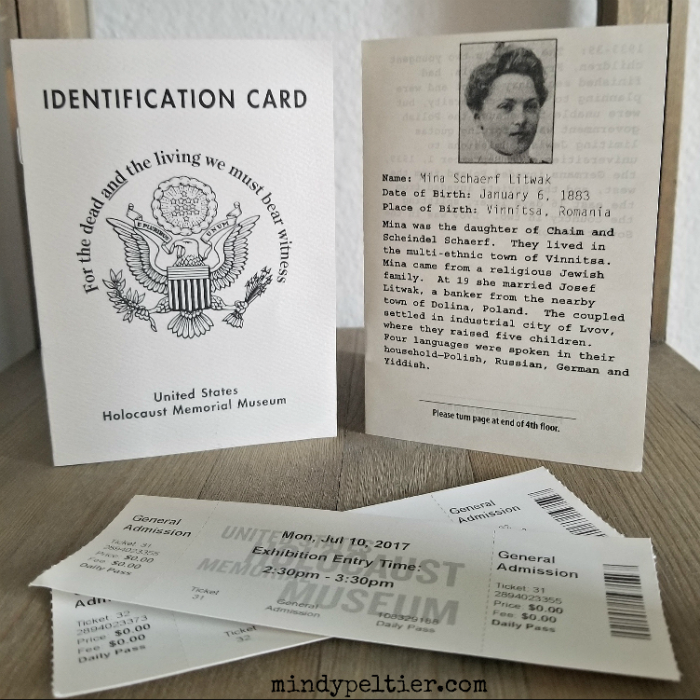
Visitors journeyed through the war, then at the final exhibit discovered if they lived or died. It’s a powerful way to personalize the experience.
Yellowed newspapers display the horrifying news Americans read while sipping their morning coffee.
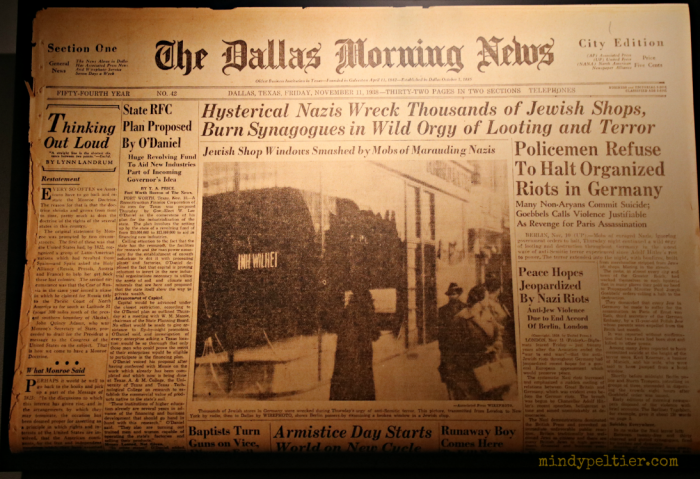
Friday, November 11, 1938

Wednesday, November 16, 1938
Artifacts of the Holocaust

US Holocaust Memorial Museum by the city of Warsaw.
Teenage visitors walk on cobblestone from Chlodna Street, which was in the Warsaw Ghetto. Their demeanor, clothes, and interactions starkly contrast the 500,000 Jews who originally walked this street. The ghetto was only 1.3 square miles.
In the ghetto, about 100,000 residents died from disease, exposure, and starvation. The Germans sent over 265,000 residents to their death in Treblinka killing center. The Nazis murdered another 35,000 during deportation actions. Only about 11,500 Jews of Warsaw survived.

Before the war, about 25,000 Jews lived in Tarnow, Poland. On September 8, 1939, the German army arrived. From June 11 to 15, 1942, they marched Jews into the 17th-century Tarnow Jewish Cemetery and shot them. Most of the residents murdered were elderly and children.
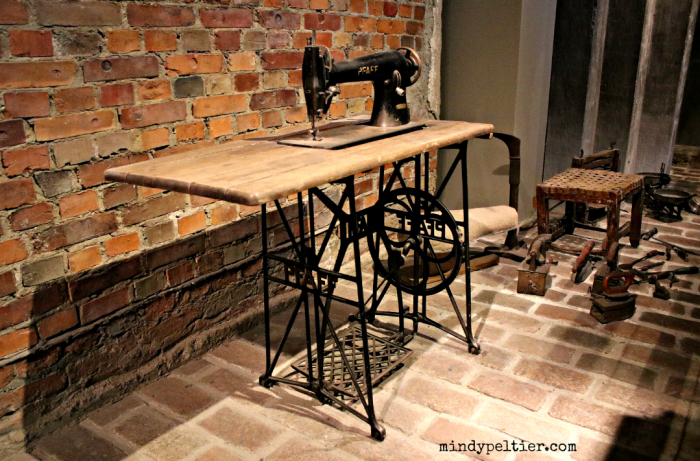
After the war, this Pfaff sewing machine and these tools were found at the site of the former ghetto in Lodz, Poland. The ghetto inhabitants made themselves indispensable to Germany by producing goods such as German military uniforms.
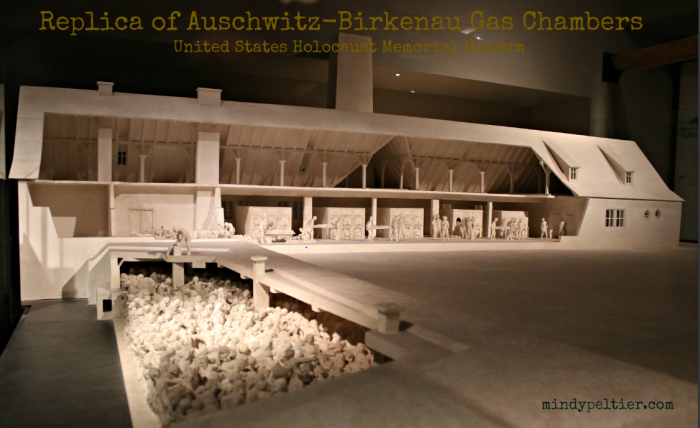
The replica crematoria show the steps the prisoners went through; the disrobing area, the gas chamber, and then the crematory ovens.
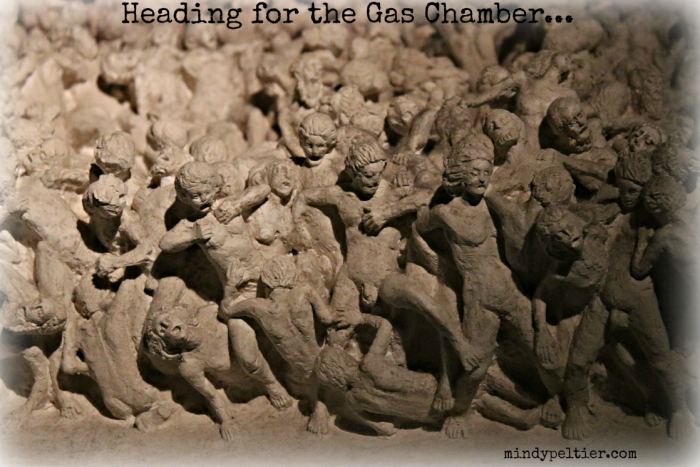
created by Mieczyslaw Stobierski .
The naked, terrified masses sculpted into plaster force visitors to emotionally connect with the Holocaust.
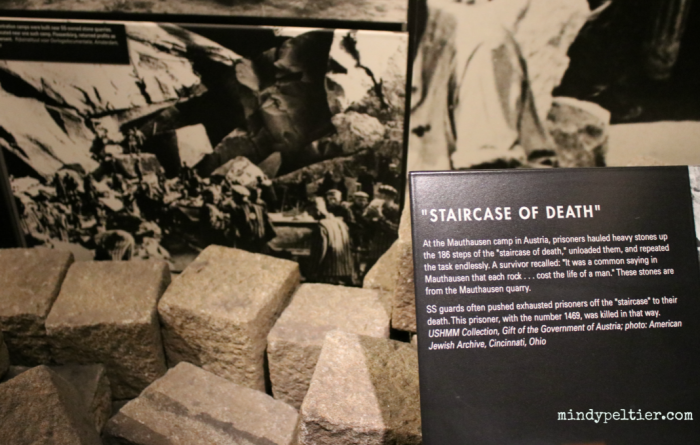
These government of Austria donated these stones from the Staircase of Death that was at the Mauthausen concentration camp. SS guards forced prisoners to carry 110-pound stones up the 168 steps. At the top, the prisoner was forced to choose between being shot or pushing another prisoner from the cliff. Many committed suicide instead. Mauthausen was the first camp built and the last to be liberated. To see more pictures click here.
Names from the Holocaust
Banned books are displayed in piles and listed by name. There are lists of the names of the condemned. The names of annihilated towns are etched into glass walls on a walkway.
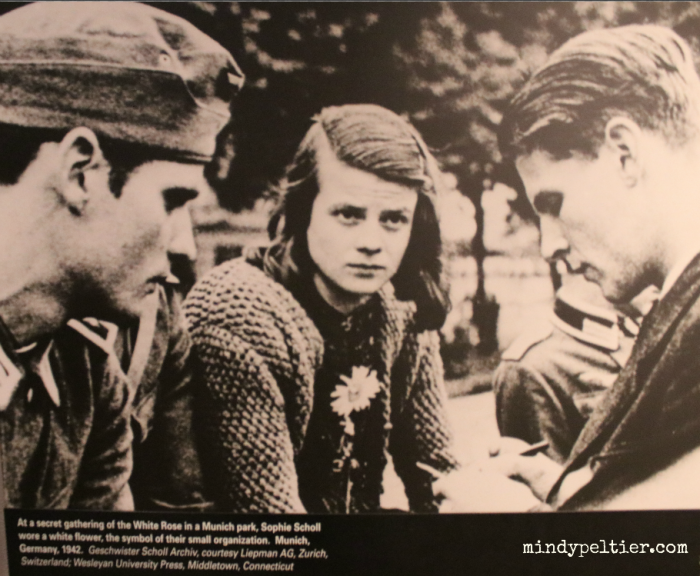
Photo courtesy of Liepman AG and Wesleyan University Press.
Photos and biographies are posted along with the name of each member of the White Rose resistance group from Poland. Every name matters.
The Righteous Among Nations, the non-Jews that helped the Jews during the Holocaust, are listed by country in an exhibit. Every name matters.
There are displays that remember the persecution wasn’t only against the Jews. The Nazis also persecuted Jehovah’s Witnesses, homosexuals, Romas, and physically and mentally challenged were also persecuted. Every name matters.
The Word Holocaust Remembrance Center in Israel, the Yad Vashem, also values every name. They sponsor a project called “Shoah Victims’ Names Recovery Project.” The goal listed on their website is to “memorialize each individual Jew murdered in the Holocaust by recording their names, biographical details, and photographs on special forms created by Yad Vashem, called Pages of Testimony.” If you lost a loved one during the Holocaust, please contact them. Every name matters.
During the Holocaust, not every name mattered. In Holocaust remembrance, every name matters.
Faces of the Holocaust
In 1939, photographer Yaffa Eliach photographed over 100 Jewish families from Eisiskes, the Lithuanian town where she grew up. She captured happy families, distinguished patriarchs, children, and extended families.
A mass shooting occurred in Eisiskes in 1941. Only about 29 Jews and these photographs survived the slaughter. The exhibit, Tower of Faces, features 1,500 of these photographs in a three-floor high room. The room is haunted with the faces of lives past.
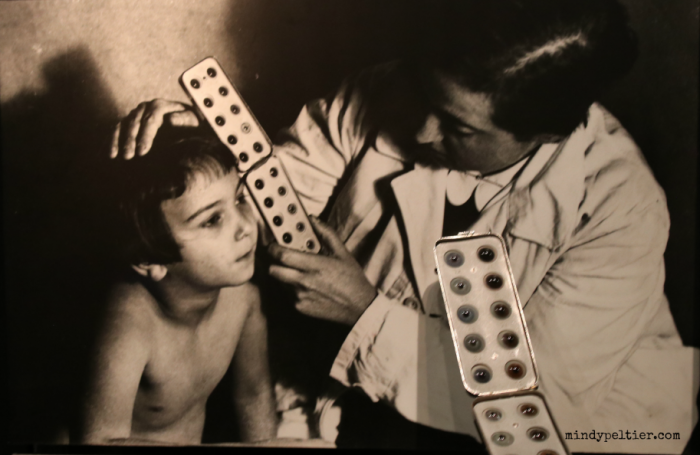
The Nazis had very specific ways of determining who was racially superior enough to survive.
A woman compares this little girl’s eye color using a metal tray with samples of glass eyes in acceptable colors.
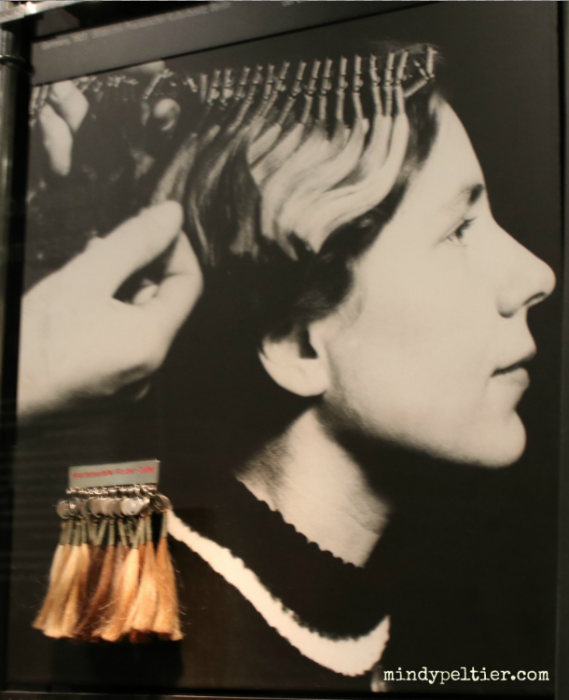
The Nazis used swatches of acceptable hair colors to evaluate each victim’s hair color.
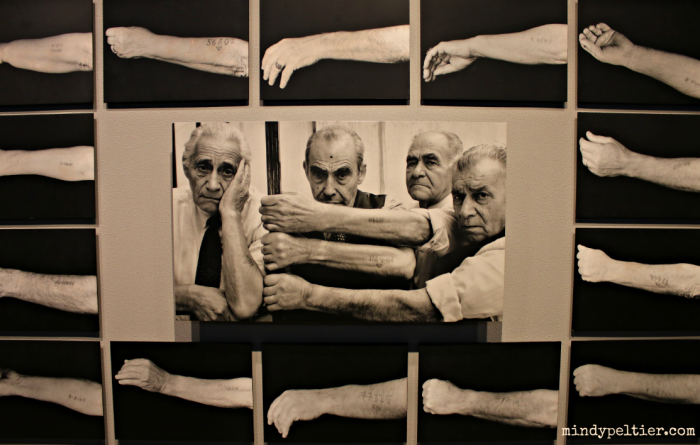
The unacceptable people were tattooed with identification numbers. Even though the ink fades, the memories don’t. These men survived. Many of their friends and family didn’t.
Why Talk about the Holocaust?
Despite concrete evidence, there are still Holocaust deniers. There are thousands of first-hand accounts of survivors, pictures, artifacts, and admissions from former Nazis.

We need to proclaim the atrocities done during World War II by Nazi Germany under Adolph Hitler.
The general belief is if we keep the horrors of WWII alive, history won’t repeat itself. That’s the goal. But, the truth is that not only do people deny it, now people don’t even know it happened. According to The Atlantic, only 54% of the world has heard about the Holocaust.
This quote from Emma Green is from the same article in the Atlantic.
“Seventy years after the liberation of Auschwitz, two-thirds of the world’s population doesn’t know the Holocaust happened—or they deny it.” @emmaogreen
There’s an urgency to retain the objects, memories, and photographs the vile Nazis tried to destroy when discovered because the first-hand witnesses and survivors are dying.
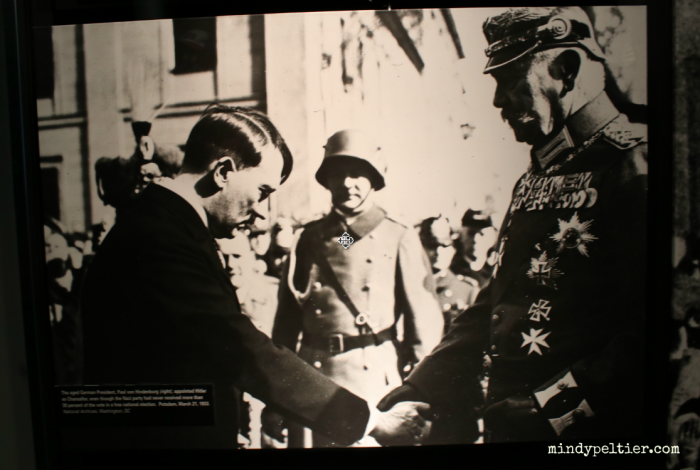
Unfortunately, the prejudice against the Jews that led to the Holocaust didn’t die at the end of WWII. The New York Times reported on May 21, 2019, that anti-Semitism is still active and growing. The German government’s anti-Semitism commissioner warned Jews to stop wearing kippas in fear for their safety, as reported in a May 26, 2019 article by the BC. The state changed their statement a few days later and encouraged everyone to wear a kippa to support religious freedom and now cower to the oppression, according to Fox News. The New York Post recorded that anti-Semitic crime rose 20% last year. We must speak up.
If you can’t make it to DC to see this incredible museum, you can research online using these collections.
- Holocaust Encyclopedia
- Holocaust Survivors and Victims Resource Center
- Encyclopedia of Camps and Ghettos
The United States Holocaust Memorial Museum will convince you that the Holocaust happened. And that it can’t happen again.



Leave a Reply